
views
Memorializing the Day

Read books about the events of that day. Books are a great place to begin your understanding of the events of December 7, 1941. Different books may offer different perspectives or focus on different events, so try to read over multiple sources for a more holistic understanding of that day. Endeavor to find texts that represent both the American and Japanese perspectives. Understanding the motivations of each side, even if you believe one to be right, will help you better comprehend the magnitude of that day. Some books recommended by the Pearl Harbor Visitors Bureau include The USS Arizona by Joy Waldron Jasper, James P. Delgado, and Jim Adams and At Dawn We Slept: The Untold Story of Pearl Harbor by Gordon W. Prange, Donald M. Goldstein, and Katherine V. Dillon.
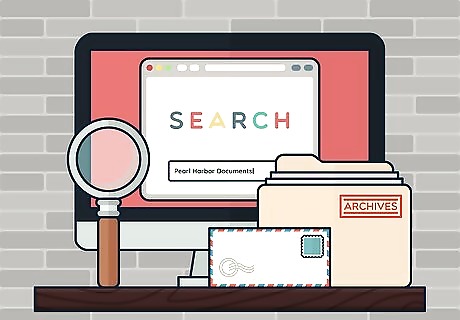
Look at primary source documents. Documents such as naval logs, letters from soldiers, and diaries of survivors provide first-hand accounts of the events of that day. Many of these have digital copies that can be found online at sources like the National Archives and the Smithsonian Institution. Look at documents from multiple perspectives. A Japanese soldier will have a different perspective than a U.S. commander, and a civilian will have a different perspective than military personnel.
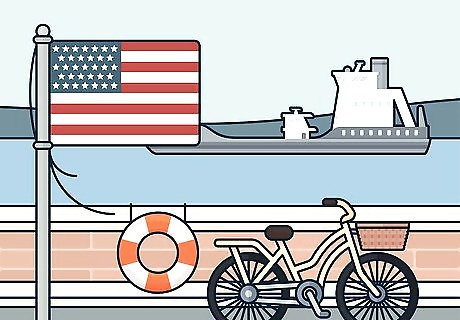
Visit the USS Arizona Memorial in Hawaii if you're able. If you have the resources to visit Hawaii or if you're already planning a vacation out there, set aside some time to visit the USS Arizona Memorial. There is a free boat operated by the National Park Service to transport people from Honolulu to the memorial. The memorial consists of a building with information and displays about Pearl Harbor. The building is set over the submerged remains of the battleship Arizona and has several walls carved with the names of those who died that day. You are allowed to bring flowers, leis, wreaths, and other tokens of remembrance to throw in the water. Check with the National Park Service in advance to make sure your token is permitted to be thrown in the water. If you're unable to visit the memorial in Hawaii, see if there are battleship museums closer to you. This can still help give you perspective on what life was like on a battleship.
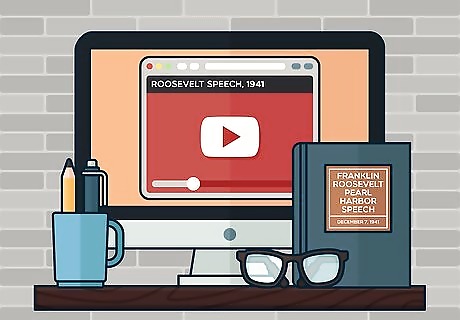
Read President Roosevelt's Pearl Harbor Speech. The transcript of President Franklin Roosevelt's speech following the events of Pearl Harbor is readily available through a wide number of online resources. Reading over this speech can offer perspective on the mood of the nation and the sentiment immediately following the event. Some sites also have recordings of the President's address to Congress.
Honoring the Survivors
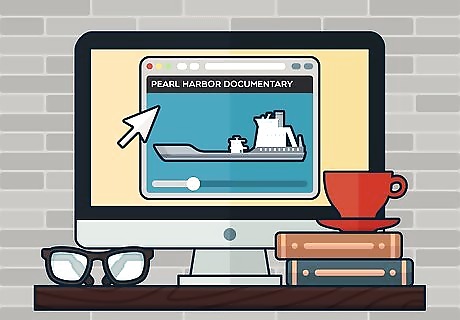
Watch documentaries that feature Pearl Harbor survivors. Some documentaries may be about Pearl Harbor, directly. Others may be about Pearl Harbor survivors and veterans. Any documentary featuring Pearl Harbor survivors can help you gain perspective on what they experienced and their life after the war. Documentaries about Pearl Harbor can be easily found on online video services such as Netflix and YouTube. You may also be able to rent copies of these documentaries from your school or local library. As with books and primary source documents, try to find documentaries that consider both sides. Japanese soldiers, American soldiers, and civilians will all have different memories of that day. Each of those accounts should be considered as a part of a larger picture.

Listen to oral histories. Several museums, veterans organizations, and archives have projects dedicated to collecting oral histories from Pearl Harbor survivors and veterans, as well as other WWII vets. Listening to these oral histories can help give you an understanding of both the events of that day and how witnessing those events impacted their daily life. Many of these oral history collections are available in part or in full online. In some cases, though, you may need to request permission to access certain histories or full collections. If that is the case, call or email the oral history librarian for the collection you want to access.
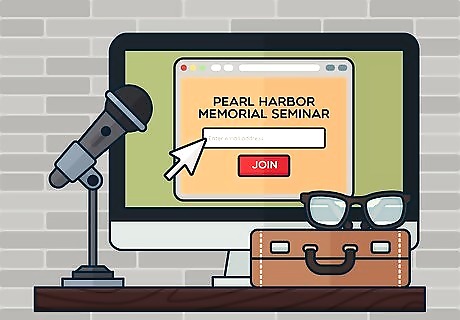
Look for speaking events featuring survivors. Local schools, veteran organizations, and other community groups sometimes invite Pearl Harbor veterans and survivors to speak at community events. Check the events calendar with your local schools and community organizations to see if they are organizing a Pearl Harbor speaking event.
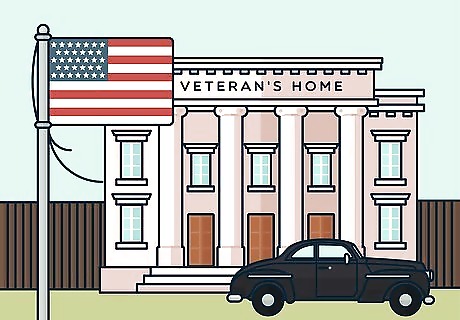
Visit a local veterans home. While many WWII veterans have passed, some still live in veterans homes around the U.S. Volunteer to spend the afternoon at your local veterans home to participate in conversation and recreation with the residents. Do not expect that veterans will want to tell their war stories. This can be difficult and traumatic for them. Volunteer out of the goodness of your heart and the desire to spend some time with the men and women who volunteered to serve their country. Not all individuals in veterans homes will be WWII vets. Do not volunteer expecting to only work with WWII veterans.
Participating in Community Remembrance
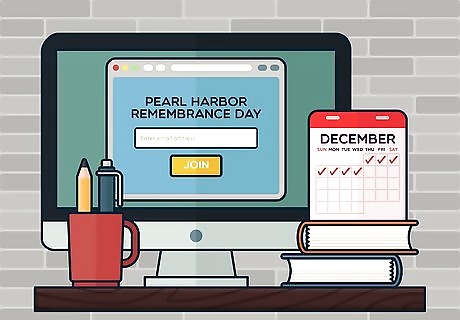
Attend remembrance events on December 7th. Events to honor and remember Pearl Harbor are scheduled every year for December 7th throughout the U.S. If you're in the U.S., look for a remembrance event near you. You may even want to volunteer to help organize the event or provide support the day-of. If you're not in the U.S., you can still check to see if there are events near you. Some events get scheduled internationally, and U.S. military bases on foreign soil may also host events. If you're unable to attend a live event, you may be able to watch a live stream or the recording of a live event after the fact.
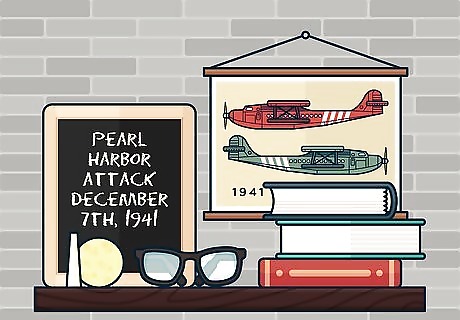
Search for a WWII history class at your university or community college. WWII history classes are commonly taught at the college level. If you're currently enrolled at a college or university, see if your history department is offering a WWII history class for the upcoming semester. If you're not currently enrolled at a college, most community colleges will allow you to enroll in a single class as part of a continuing education program. Most classes will be on WWII, not just Pearl Harbor. However, most WWII courses will cover the events of Pearl Harbor, as well as its aftermath.
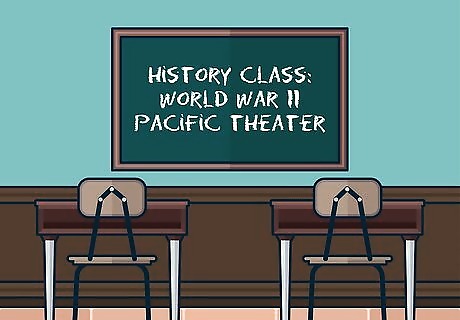
Ask about it in your history class. If you're in primary or secondary school, talk to your history teacher about organizing a lesson on Pearl Harbor. If they have room in the curriculum, they may be able to present a lesson on the events around Pearl Harbor and allow you and your peers to ask questions. If your teacher doesn't have room in the curriculum, ask them if they're willing to do an after-school lesson on the subject. They may also be willing to meet with you during lunch or after class to answer some of your questions.
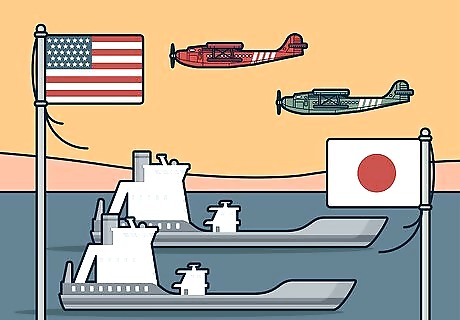
Participate in a WWII reenactment. WWII reenactments are growing in popularity as a way to remember the war. While these mostly focus on the European front, many reenactors are very knowledgeable about the entirety of the war. Volunteer to participate in a reenactment and ask others your questions about Pearl Harbor while you're there. The easiest way to find a reenactment group is often just to search online for reenactments in your area. Groups may or may not meet frequently, but they'll often post online when they're having a reenactment or participating in public education events.


















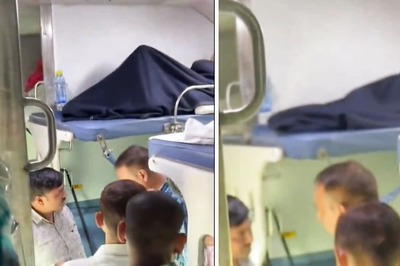

Comments
0 comment